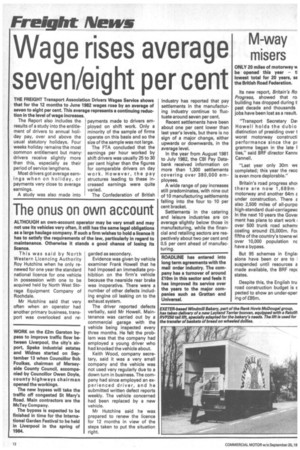Freight News
Page 8

If you've noticed an error in this article please click here to report it so we can fix it.
Wage rises average seven/eight per cent
THE FREIGHT Transport Association Drivers Wages Service shows that for the 12 months to June 1982 wages rose by an average of seven to eight per cent. This average represents a continuing reduction in the level of wage increases.
The Report also includes the results of a study into the entitlement of drivers to annual holiday pay, over and above the usual statutory holidays. Four weeks holiday remains the most common entitlement but many, drivers receive slightly more than this, especially as their period of service lengthens.
Most drivers got average earnings when on holiday, or payments very close to average earnings.
A study was also made into payments made to drivers employed on shift work. Only a minority of the sample of firms operate on this basis and so the size of the sample was not large.
The FTA concluded that the earnings per hour worked by shift drivers was usually 25 to 30 per cent higher than the figures for comparable drivers on day work. However, the pay structures leading to these increased earnings were quite varied.
The Confederation of British Industry has reported that pay settlements in the manufacturing industry continue to fluctuate around seven per cent.
Recent settlements have been about one per cent lower than last year's levels, but there is no sign of a major change, either upwards or downwards, in the average level.
In the year from August 1981 to July 1982, the CBI Pay Databank received information on more than 1,300 settlements covering over 380,000 employees.
A wide range of pay increases still predominates, with nine out of 10 manufacturing settlements falling into the four to 10 per cent bracket.
Settlements in the catering and leisure industries are on average slightly below those in manufacturing, while the financial and retailing sectors are respectively about two per cent and 0.5 per cent ahead of manufacturing.












































